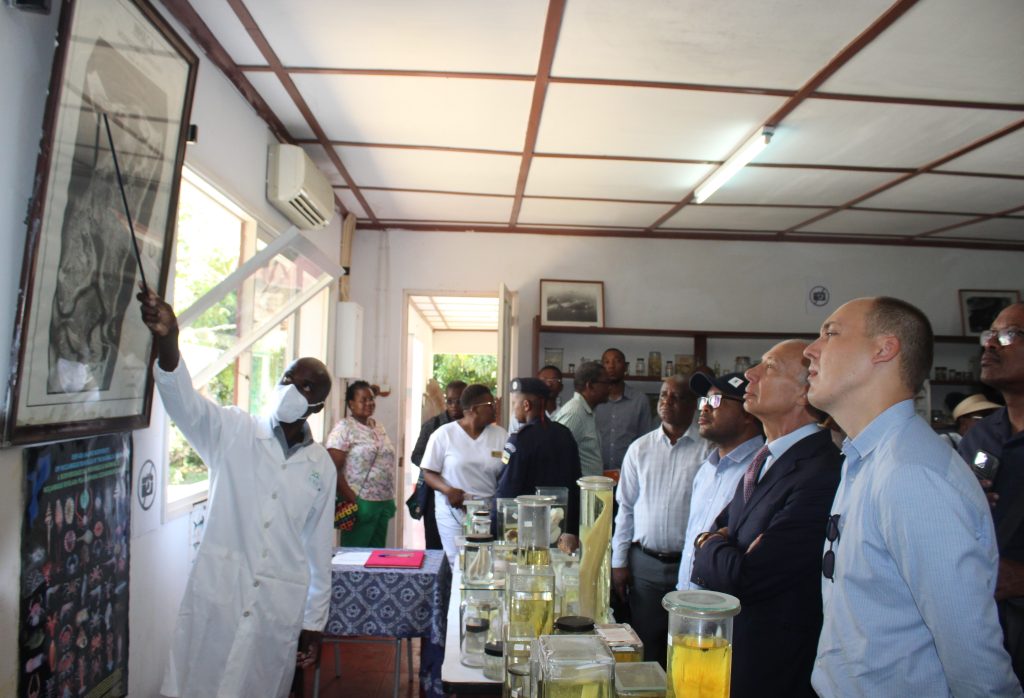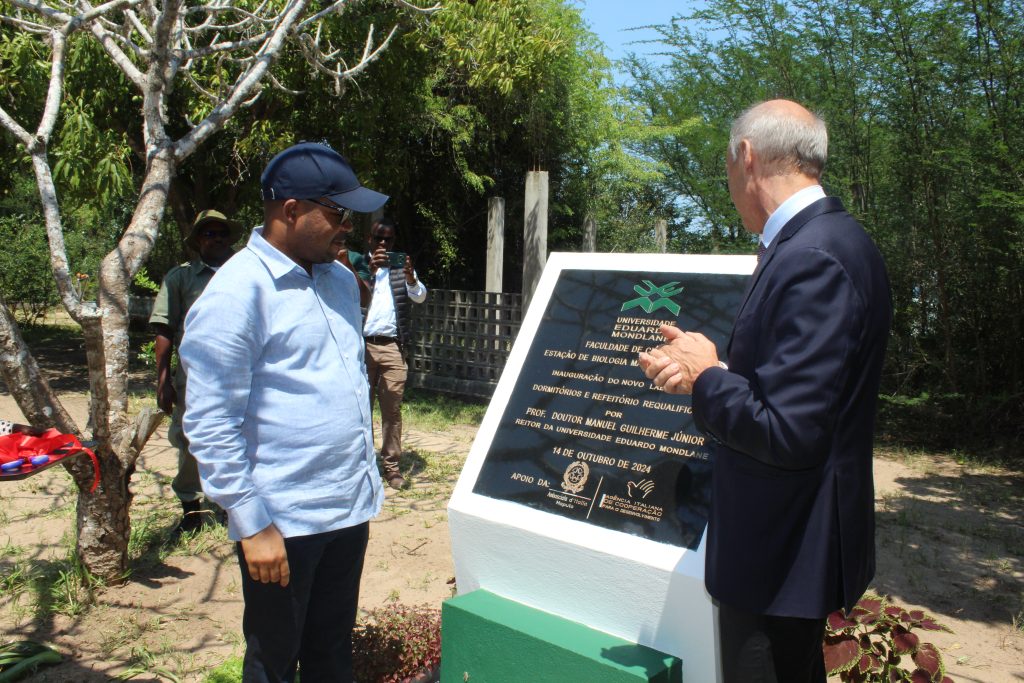
On October 14, the inauguration ceremony for the rehabilitation/construction works of part of the infrastructure of the Inhaca Marine Biology Station (EBMI), of the Eduardo Mondlane University (UEM), took place on Inhaca Island (Maputo Province, Mozambique). The event was attended by, among others, the Italian Ambassador to Mozambique, Gianni Bardini, the Deputy Ambassador, Eugeniu Rotaru, the Head of the Italian Agency for Development Cooperation (AICS) – Maputo Office, Paolo Enrico Sertoli, and the Magnificent Rector of Eduardo Mondlane University (UEM), Manuel Guilherme Júnior, along with other government officials, donors, and representatives from local and religious authorities.
AICS is supporting the EBMI through several programs related to the environmental sector (in particular, Mangrowth, RINO, and BioForMoz), contributing to the training of human resources and the rehabilitation and construction of certain infrastructures, with the aim of supporting knowledge transfer and the development of local scientific skills, in an attempt to “decolonize” research and the management of Mozambique’s natural resources.
Among the works carried out at the EBMI, the refurbishment of the dormitories and dining hall stands out, along with the new construction of the research laboratory, which will equip the Station with spaces and equipment suitable for conducting scientific research in both dry and wet environments.
The delegation, welcomed by the highest authorities of the Municipality of Inhaca, had the opportunity to visit the facilities. The new dormitories, which can accommodate 58 students and teachers, as well as the dining hall and laboratory, are essential for providing optimal conditions for national and international researchers involved in studying the rich biodiversity of the island, which is largely identified as a natural reserve and hosts various biomes, from the southernmost coral reefs on the planet to dunes, mangroves, and wetlands, and is home to families of dugongs (considered globally a vulnerable species). During the ceremony, it was possible to observe the use of the new facilities, which are currently hosting Italian and Mozambican students participating in the second edition of the Summer School, a program that, with the support of the Mangrowth project, focuses on the study of mangrove habitats. The delegation had the opportunity to interact with the students and learn about their work.
The delegation also visited the facilities that will house the laboratory, which will have the capacity to accommodate at least 10 researchers simultaneously. The laboratory consists of a wet lab, used for studying marine biological samples under controlled conditions, and a dry lab, intended for the analysis of predominantly terrestrial samples and data processing. These two types of laboratories are essential for comprehensive research on the marine and coastal ecosystems of Inhaca Island. In fact, the EBMI hosts Mozambican researchers from UEM and other national institutions, as well as from Southern African institutions, to conduct research on the protection of marine biodiversity.
The Italian Ambassador to Mozambique, Gianni Bardini, emphasized that “Research and protection of the marine environment are even more crucial in the context of environmental preservation, as the damage caused to maritime resources, although less visible than that on land, is enormous.” He also reiterated that “The environment is fundamental for all of us, being essential to guarantee and promote a future for new generations. We have a very important moral responsibility: to hand over the planet to the young in the best possible conditions.”
For his part, the Rector of Eduardo Mondlane University, Manuel Guilherme Júnior, thanked the Italian government, “our partner, who has supported us for the past 45 years. This cooperation has been important for UEM and has allowed UEM to reach the hands of Mozambicans through teaching actions, in research as well as in extension and innovation.” He also warned about the importance of sustainability, “not only in terms of science and research, but also in preserving the infrastructures built here, so that they can last and benefit not only this generation but also future generations who will need these structures.”
The event concluded with a visit to the EBMI Museum, where a technician highlighted the rich history of the station, founded in 1951, and the more than 12,000 species recorded in Inhaca, including over 150 species of corals, 300 species of birds, and four species of turtles. The technician presented some specimens, such as a dugong skeleton, an endangered animal that, thanks to the efforts of partners, including Italian Cooperation, is returning to the waters of Inhaca.
 |
 |
